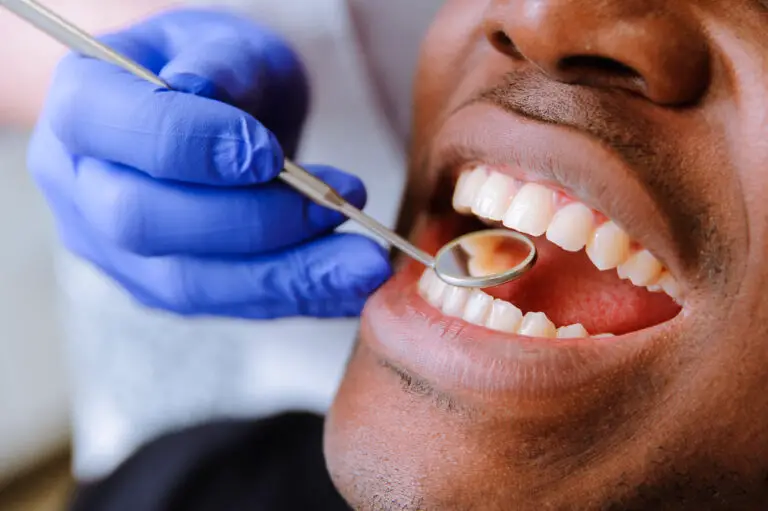If you are looking to take out a dental coverage plan, you are sure to have heard the terms HMO and PPO, and you may be wondering what they mean – as well as which one is better.
So to help you understand these questions and more, in this post, we have all the info you need about PPO vs HMO dental insurance.
If you want a preview of some of the basic topics we’re going to be discussing, you can also check out this video before reading on.
HMOs and PPOs – Differences Overview
Before we get into the details of HMOs and PPOs, let’s start with an overview of these plans.
HMOs and PPOs are two of the most popular and common types of dental coverage. They have a few similarities as well as some important differences – and each type has associated advantages and disadvantages.
DHMO stand for Dental Health Maintenance Organization – and sometimes they are just called HMOs for short. The main advantage of this type of plan is that they are among the most economical options so are ideal for those looking to save money.
However, this comes at the cost of sacrificing a great deal of flexibility since you have far less choice over which dentist you see.
DPPO stands for Dental Preferred Provider Organization (sometimes referred to as just PPO). These plans give you more flexibility over which dentist you can see – as well as in some other aspects of your dental care.
The downside is that this is balanced by generally higher costs in terms of both premiums and out-of-pocket costs compared to HMO plans.
But to understand how this works, we need to look at each type of plan in more depth, so let’s do that now.
What are the advantages of an HMO plan?
The most attractive thing about an HMO plan is the price since the premium is usually lower than a PPO plan, and on top of that, out-of-pocket costs are also much lower.
There is usually no deductible, so the insurance company starts paying as soon as you need treatment.
Furthermore, copayments are usually minimal – and sometimes no copayments are required at all.
Where copayments are required, they are usually predetermined for each type of treatment
In addition, there is usually no annual cap to the amount you can claim for treatments, so if you need to have expensive dental procedures carried out, you won’t need to worry about the high costs exceeding your limit and being forced to pay the outstanding balance.
HMO plans are designed to encourage preventative care to minimize the need for corrective treatments.
This means holders of these policies are encouraged to see their dentist for regular check-ups – and as a result, check-ups and cleanings are usually covered 100%.
Part of the reasoning behind this is that if people see a dentist regularly, they are less likely to need major dental procedures, which helps keep costs low.
With HMOs, there are usually no exclusions for pre-existing conditions or missing teeth.
Finally, after receiving treatment, the dentist will usually take care of the admin side of things with the insurance company, so you don’t need to worry about filling in forms – or paying up-front and then claiming a reimbursement.
What are the disadvantages of an HMO plan?
The biggest downside to an HMO plan is that you must name your primary care dentist, and the number of dentists available to choose from is limited.
This means you may need to travel further to see a dentist, and it may also be more difficult to get an appointment quickly if you experience some kind of dental emergency.
If you decide to see an out-of-network dentist, you will not be covered and will have to pay for all the work yourself.
Also, if you need to see a specialist, you need to get a referral from your dentist first – which means you will have to wait longer before you can see the specialist.
Finally, although all plans are different, there may be some restrictions on the number of dental visits you can have each year as well as the types of treatment covered. Orthodontic treatments are usually not covered by HMO plans.
Pros
- Low cost in terms of premiums
- Low copayments when required
- No deductible
- Copayments clearly defined
- No annual maximum
Cons
- More limited choice of dentists
- Out-of-network treatments not covered
- Referrals required to see a specialist
- May be some limits on type of treatments or number per year
What are the advantages of a PPO plan?
With a PPO plan, there are far more options when it comes to choosing a dentist, and if you are switching plans, there’s a good chance you’ll be able to stay with the dentist you usually see.
If you ever need to seek dental care at a dental clinic not included in your insurance provider’s network, it can also be possible to claim on your insurance – although you will usually have to pay up-front and then claim a reimbursement, which can take some time.
Another advantage is that if you need to see a specialist, you don’t need a referral, which can speed up the process of receiving the dental care you need.
With this type of plan, you don’t need to name a primary care dentist, and if you need to see another dentist, as long as the dentist is in-network for your insurance provider, you will still be covered.
When making claims, in-network dentists can usually take care of the insurance admin part, so you don’t need to worry about paperwork for claims.
Finally, like with HMOs, with PPOs, basic dental care procedures like check-ups and cleanings are usually covered 100%, even before you meet your yearly deductible.
What are the disadvantages of a PPO plan?
The disadvantage of a PPO is that for the added flexibility, you have to expect to pay more.
This means your annual premium is likely to be higher, and out-of-pocket expenses like the deductible and copayments will be more.
On top of this, most plans also include an annual cap to the amount you can claim each year, so if you need to undergo an expensive procedure, you may need to pay the difference yourself.
Pros
- More flexibility over which dentist you choose
- Larger network of dentists and dental facilities
- Can claim for out-of-network treatment
- No referral required to see a specialist
Cons
- Higher premiums
- Annual deductible
- Higher copayments
- Annual cap on treatment cost that can be claimed
HMOs and PPOs: Which is better?
When it comes to HMOs and PPOs, there is no definitive answer to which option is better – since this depends very much on individual requirements.
An HMO is a good option for anyone who needs to keep costs down and who also doesn’t care much about which dentist they see.
If you have good dental health and rarely if ever need dental treatments like fillings, an HMO could be a good pick.
On the other hand, if it’s important to you to stay with a dentist you already know and trust, a PPO could be a better option.
PPOs come in different tiers, with higher tiers offering more comprehensive coverage and a wider range of expensive treatments. This means if you don’t often need expensive treatments, you can save yourself some money by choosing a low-tier PPO plan.
So in short, an HMO is a better option for someone who wants to save money and doesn’t mind a more limited choice of dentists – while a PPO is good for someone who doesn’t mind paying more for extra flexibility.
HMOs and PPOs: How to choose?
When choosing between HMO and PPO plans, you need to think about which aspects of the plan are most important to you by asking yourself certain questions.
For example, how important is it for you to stay with a particular dentist? If it’s a major consideration, a PPO may be the best choice.
Also, consider your current dental health. Do you often need work like fillings, root canals or extractions? Or do you only need these kinds of treatments rarely if ever?
For those whose teeth are generally very healthy, an HMO plan could be a good choice – but if you often need to see a specialist, choosing a PPO can speed things up.
For those who often need major treatments, an HMO could be a good option because of the lack of an annual cap – although you should be clear about whether a plan covers the procedures you need before enrolling.
As a rule, you should always do thorough research about your various options, and you should also read the details of a plan carefully to make sure you understand exactly what is and what isn’t covered.
In particular, make sure you understand all the details about out-of-pocket costs as well as any limitations.
If in doubt, speak to your dentist for advice – and also check with your dentist that they accept the plan you are going to take out before you enroll.
Research your options and read policies carefully
So as we’ve seen, it’s impossible to say whether HMO plans or PPO dental plans are better since both types can be more suitable in different situations.
The key to choosing is to understand the pros and cons of each type to see which best matches your personal situation and requirements – and then to always read the details carefully and check with your current dentist before signing up to a plan.







